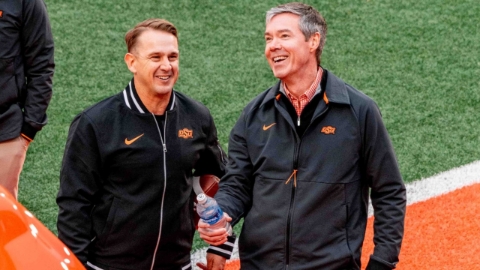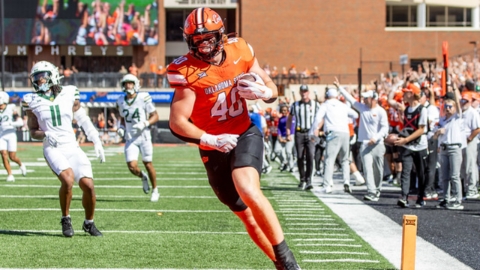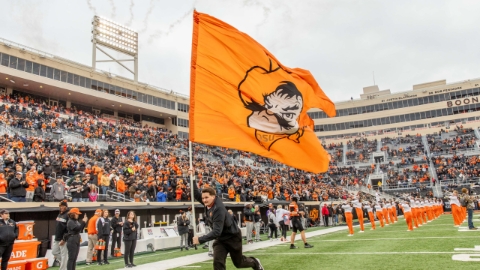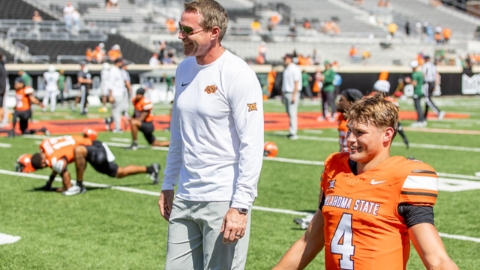Big 12 Board of Directors Agree with Commissioner Bob Bowlsby on His Exit Plan
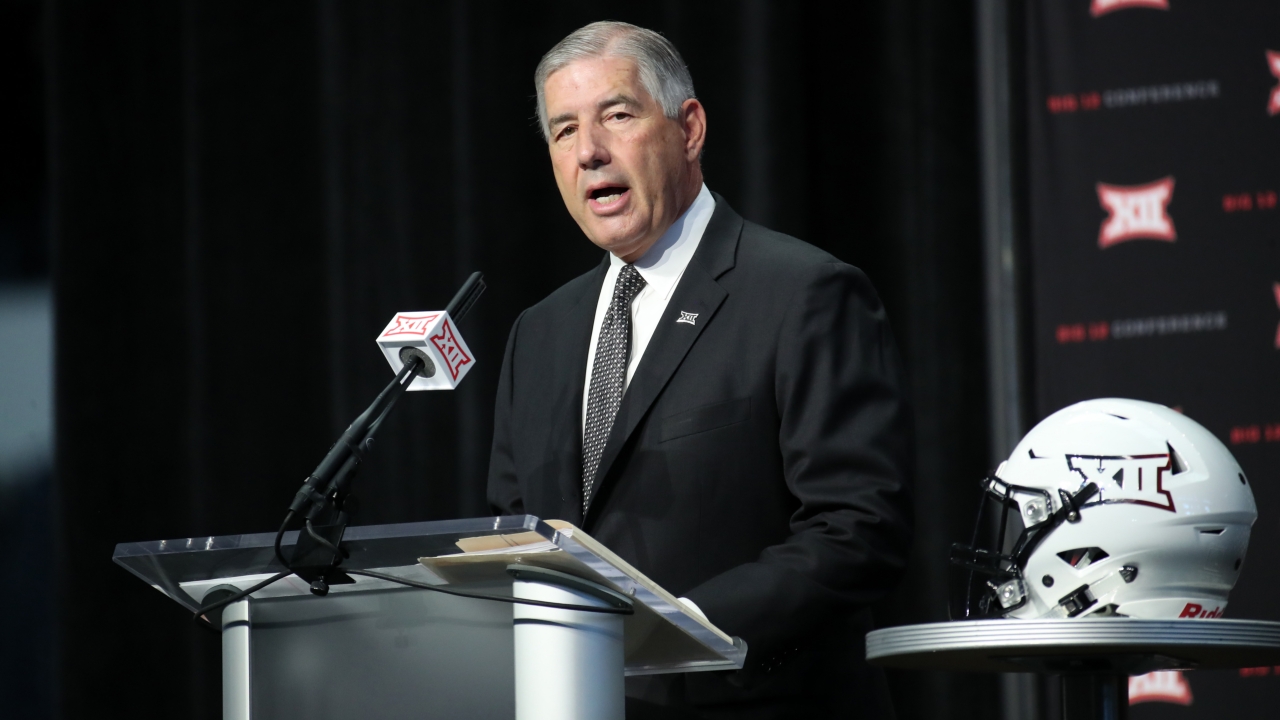
STILLWATER – The Big 12 Conference Board of Directors, headed by chairperson and Texas Tech University President Lawrence Schovanec, made the decision to seperate from Big 12 Conference Commissioner Bob Bowlsby. The board cited failure to perform as the primary reason for the change which will take place over a three-month (90-days) period. Pokes Report has also learned that the Board of Directors also felt the need to have somebody better versed in television contract negotiations and even more astute on dealing with the television networks and other potential multimedia partners. The move was actually made last week but the parties waited to make the announcement on April 5.
The release from the Big 12 Conference laid out a mutual decision between the parites, but this was initiated by the Board. The terms will be favorable and will accommodate Bowlsby as he has been an effective leader during most of his time as commissioner.
"After more than 40 years of serving in leadership roles in intercollegiate athletics, including the last 10 with the Big 12, and given the major issues that college sports in general and the Big 12 specifically will address in the next several years, I have reached a natural transition point in my tenure as Commissioner, as well as in my career," Bowlsby was quoted in the release.
The release also said Bowlsby would transition into a new role in the conference as his contract is paid out. The contract runs through 2025.
“On behalf of the Big 12 Conference, I want to extend my sincere appreciation to Commissioner Bowlsby for his outstanding leadership over the last decade,” Dr. Schovanec (Texas Tech President and Big 12 Board chair) said. “Bob has consistently driven distributable revenue growth for the Conference’s member institutions, has stood strong during turbulent times in the world of collegiate sports, has led innovation within collegiate athletics, and has worked tirelessly to ensure the stability and future of the Big 12 Conference.”
Dr. Schovanec also thanked Bowlsby for staying with the conference in a future role and assisting with the transition to the new commissioner.
No replacement was immediately identified by the Big 12 Board. The 90-days gives the Big 12 Board of Directors time to identify the next leaders of the conference. The exit plan was a negotiated part of the process to make a change at the top of the conference leadership.
That perception of performance failure stems from iast summer and the abrupt departure of blue blood football schools University of Texas and University of Oklahoma to the Southeastern Conference. It looked poor as Bowlsby had worked two years plus in a small-assigned working group for the College Football Playoff on expansion with three others including SEC Commissioner Greg Sankey. How could Bowlsby work with Sankey so closely for an extended period and be caught completely off guard when two of his top schools left for Sankey’s conference?

Actually, Big 12 Presidents and Chancellors that make up the Big 12 Board of Directors later learned that Bowlsby had been warned. First by former Oklahoma State University athletic director Mike Holder and then later new Oklahoma State University President Dr. Kayse Shrum had warned Bowlsby that the University of Oklahoma was contemplating a move to the SEC.
Bowlsby’s response reportedly was that he slept well at night knowing that Oklahoma and Texas loved the Big 12 and would never leave.
It would later prompt a remark made in a teleconference meeting between the Big 12 Board and Bowlsby after OU and Texas departed where the commissioner was asked, “How he was sleeping now?”
Bowlsby admitted to D Magazine last October that the ordeal was rough. It started as soon as he landed in Dallas from a trip to Kansas on the day the rumors broke of Texas and Oklahoma departing.
“As I got off the plane, the first thing I did was call the athletic directors and presidents at UT and OU, then I called [SEC commissioner] Greg Sankey to try and find out what in the world is going on,” Bowlsby told D Magazine. “It took much longer than I would’ve wanted to get ahold of them. I kept getting their voicemails.
“It was during the course of the next couple of days [that] we finally talked and got a little more understanding of whether or not this news was going to actually move forward,” Bowlsby continued. “At this point, both parties were pretty noncommittal. No decisions had been made. But I felt [in these conversations], the SEC probably already had them.”
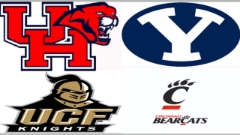
Bowlsby would later go on a crash course visiting (in order) BYU, Cincinnati, Central Florida, and Houston and quickly urged the Big 12 members to welcome those four schools in as future members that would help make up for the loss of Texas and Oklahoma. The Big 12 membership and Bowlsby were unified on the move. The Big 12 members are still positive about the addition of the new schools, but the impending multimedia rights negotiations and what the loss of UT and OU will mean are devastating to think about.
The SEC has already negotiated its’ future contract and the addition of Texas and Oklahoma is factored in. The Big Ten is expected to have a very lucrative contract negotiation for their television and multimedia rights coming up later this year. Industry analytics have the Big 12, Pac-12, and ACC significantly behind the SEC and Big Ten. There is genuine concern about the conference revenue and annual payouts to members coming in the future. The Pac-12 hired George Kliavkoff away from the MGM Entertainment empire this past summer to take over as their commissioner. The Pac-12 is coming up after the Big Ten on their multimedia rights negotiations. Both are before the Big 12. Bob Bowlsby did negotiate that past television contract for the league with ESPN and ESPN+ for the Big 12 Now streaming network and with FOX Television.
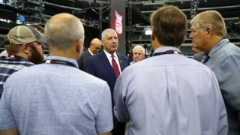
There are also thoughts that conference realignment may not be through and there could be more. The confidence of Bowlsby fostering the Big 12 into a position of power is apparently low.
Bowlsby has been very involved in the College Football Playoff and its’ emergence. The Big 12 has had success with Bowlsby at the helm including Monday night’s NCAA Men’s Basketball Championship won by Kansas. Bowlsby was sitting prominently behind the Jayhawks bench.
The league has seen 25 national championships and 160 plus individual NCAA champions. In 2020-21, the Big 12 captured five team national championships and five runner-up finishes, including Baylor’s men’s basketball title. Twelve teams have competed in College Football Playoff New Year’s Bowls in the seven years of the structure with Oklahoma making the Conference’s first appearance in the CFP semifinals in 2015 and repeat showings in 2017, 2018 and 2019.
Prior to his role at the Big 12, Bowlsby was athletics director at Stanford for six-years. He was the athletics director at Iowa for 15-years.
He has always been a leader and highly involved in collegiate and amateur sports following his own collegiate career at the University of Northern Iowa where he competed as a wrestler. He was appointed to the United States Olympic Committee Board of Directors in 2007 and completed that term at the 2014 Winter Olympiad in Sochi, Russia. In 2002, President George W. Bush chose Bowlsby to be a member of the Commission on Opportunities in Athletics, which reviewed the first 30 years of Title IX.
Bowlsby has previously served as president of the NCAA Division I-A Athletics Directors’ Association, chair of the NCAA Division I Men’s Basketball Committee (2003-04, ’04-05) and chaired the NCAA Management Council. In addition, he has also chaired the NCAA Wrestling Committee, served on NCAA committees on Financial Aid and Amateurism, the Special Committee to Review Amateurism Issues and the Special Committee to Review Financial Conditions in Athletics.
(The Big 12 Conference and it’s staff bios contributed to this report.)
